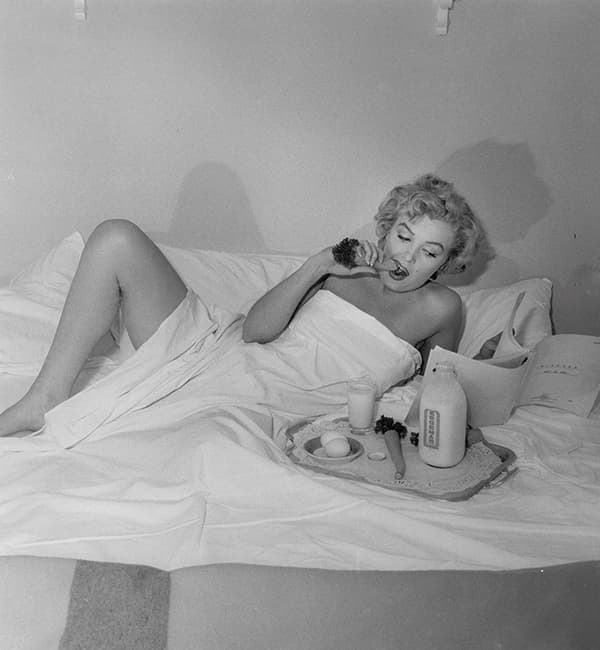
There are plenty of stories about the relationships formed between photographers and their models, but perhaps none has been so intimate as that between Andre de Dienes – a fashion photographer for Life, Esquire and Vogue – and the then unknown 19-year-old model Norma Jeane Baker, later known as Marilyn Monroe.
The resulting images are featuring in an exhibition called ‘Andre de Dienes: Marilyn and California Girls’ that is currently showing at the Steven Kasher Gallery in New York. We spoke to Cassandra Johnson from the Steven Kasher Gallery about the exhibition and de Dienes’ relationship with Marilyn.

Can you tell me a little about de Dienes’ career as a photographer?
De Dienes worked in Paris for a while on a communist newspaper, and then for the Associated Press until the mid thirties. And then around that time a Parisian fashion designer saw de Dienes’ work and suggested that he perhaps move into the realm of fashion photography.
In the late thirties he was offered a position at Esquire in New York City. He worked for Life Magazine, Esquire, Vogue, and decided to move to California in 1944, and that’s when he really began to specialise in nudes, some of which will be in the exhibition. He was also quite a well-known fixture in the Hollywood scene in the 1940’s/ 1950’s.
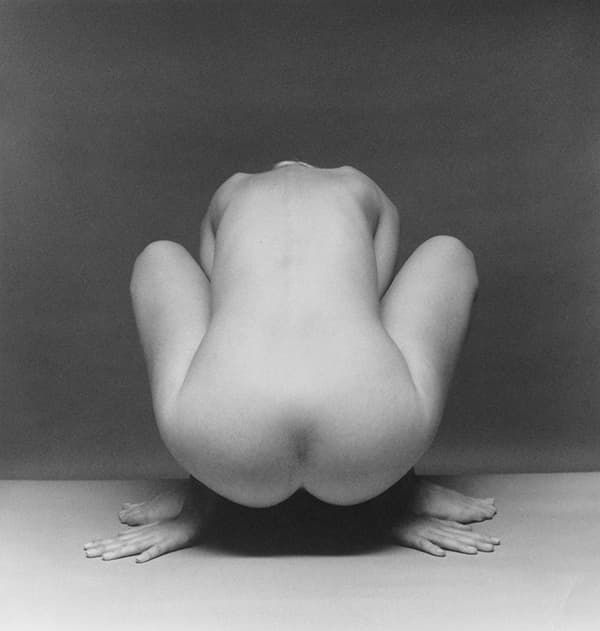
Can you tell me about his ethos as a photographer and his interest in focusing on fashion and then nudes for much of his career?
He just had a sense for aesthetics and he was really attracted to things that were beautiful, whether it was the natural world, a landscape, a couture gown that he was shooting for Vogue, or a beautiful model – he was inspired for a lot of his California work by the work of Edward and Brett Weston, so he was interested in integrating these beautiful women into this beautiful landscape, and I think that’s where some of the experimental nude photography began.

How did he and Marilyn first meet?
They met in 1945 when he was looking to start photographing some of his artistic nudes, and he reached out to a couple of different model agencies looking for nude models, and one of them, the Blue Book model agency, said, “We’ve got this girl in my office really eager to get her start and she won’t leave me alone. We’re sending her to you,” and the way he describes it in his memoir he calls her a miracle, he calls her a sexy looking angel, sent just for him.
He became immediately obsessed and fascinated with her, decided that she was much too innocent and pure to take any nudes but he took her on a 5 week long vacation into the mountains, where they became very close, they actually returned from this trip engaged very briefly.
But then he went back to New York for a time and their engagement broke off, but they remained very close friends for the rest of her life.

How pivotal, if at all, were his images in helping Marilyn establish herself in Hollywood?
I would say that the series of pinup shots, which we’re including in the exhibition that he shot in New York and Long Island, were some of the first well-known photographs of Marilyn.
She really started to become a more household name after that. It wasn’t until just after those photographs, around 1946, she had just changed her name from Norma Jean Baker, to Marilyn Monroe and that was just after that series of pinup shots had gone out to the market really. And that was when she started to transition from a model into an actress.

What makes de Dienes photographs of Marilyn notable from all the ones that were taken of her during her lifetime?
Every time they would meet, she would essentially send everyone else away, she would send away her dresser, she would send away her makeup artist, she would send away her wardrobe people, all of her handlers, and it would just be the two of them, so of all of the photographs of Marilyn the images that de Dienes captured of her are some I think of the purest, they show her at her most true self.
What’s most interesting is that they are some of the earliest. He essentially discovered her, so although photographers like Douglas Kirkland and Milton Green shot some very famous series – some of which are also quite uncommon – they are also later, from the 50s, so the photographs that we have in her exhibition of the very early 1945 era are very rare.
You really don’t see photos of her at that age. Once she was renamed Marilyn Monroe, the studio sort of rebranded her. They chopped off her hair, dyed it blonde and started dressing her in a certain fashion. They were trying to market her as a sexpot so didn’t really want those older, more farm-girl-style pin-up photographs of her looking quite innocent to come out. Which is what you see in a lot of the early photographs by Andre.
He didn’t actually photograph her again until 1952 outside where she was staying at the Bel Air Hotel. And in that series of photographs she looks quite distressed.
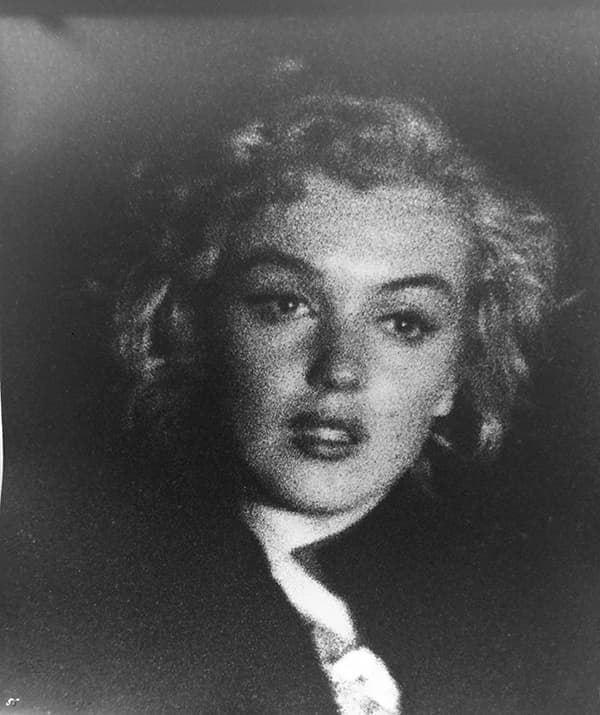
She called him in the middle of the night, they went out into an alley behind the Bel Air Hotel and he shot her with no make-up, almost in tears. About that time there was a lot of negativity around her. The studios were taking advantage of her. A lot of people say that they were feeding her drugs, so she was really going through a difficult time.
I think the interesting thing about Andre’s work is that you really see the transition. You see this innocent young girl looking to get into the movie business and then it jumps to these very forlorn-looking shots of her after she’s been ridden hard by the system and taken advantage of and you get to see both sides of it, the very very beginning and then the beginning of the end.
Can you tell us about this exhibition in particular?
A large part of the exhibition is made up of the early photographs from Tobay beach and Long Island, some of those very early pinup photographs and we have lifetime prints from the 1952 shoot outside the Bell Air Hotel and a few other shoots as well.
There’s a shoot in New York where they’re in her apartment and he photographed her engaged in her daily routine – reading a script, taking a bath, eating a carrot – it’s very quaint and she appears much happier in those photographs. He shot her throughout her life, but the shoots were often years apart, so we have examples from almost all of their shoots together.

I read that the prints de Dienes had made of Marilyn were lost many years. Does the exhibition feature any of these lost images?
Yes, these are essentially the Lifetime prints, The exhibition includes 50 of these.
Essentially, nobody knew they existed. After he passed away, his wife and the studio were making modern prints, and they later discovered these prints he made during his lifetime which were very different. So they are very rare, which is very exciting.
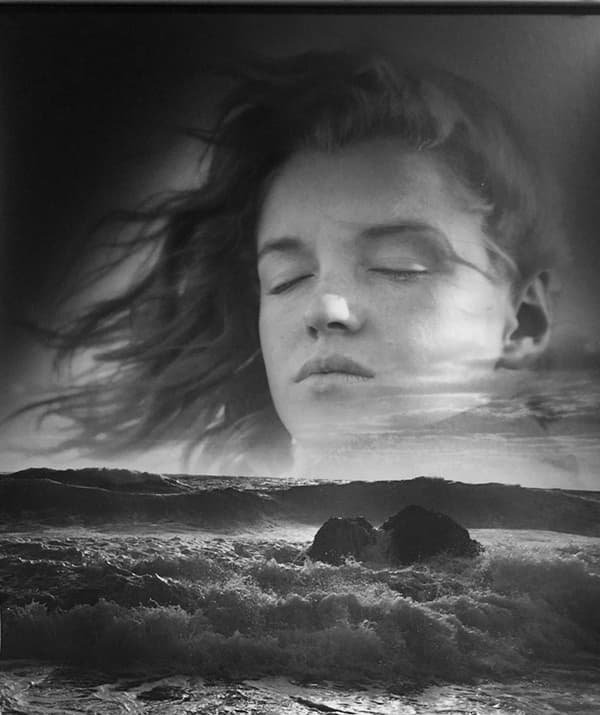
What kit did he favour?
He started working with a Rolleiflex; when he first arrived in NY he was working with a Retina camera and then starting in the 30s he was working with a Rolleiflex and from then on pretty much worked with that exclusively.
Did he have any particular photographic techniques or printing processes?
He did do some experimenting with double exposure, collage. When he was printing he would sometimes layer the negatives, different shots one on top of the other to produce this kind of layered images. They’re very different and quite special, especially considering that he was working on them in the 1940s. This is well before Photoshop, so he was doing everything in the darkroom.

He was also interested in distortion and photo montage, so some of the nudes are mirror images, they take on this kaleidoscopic feeling where you’ll have two sets of legs coming out of a dune or something like that or coming our from the mountain background, so they’re all a bit abstract.
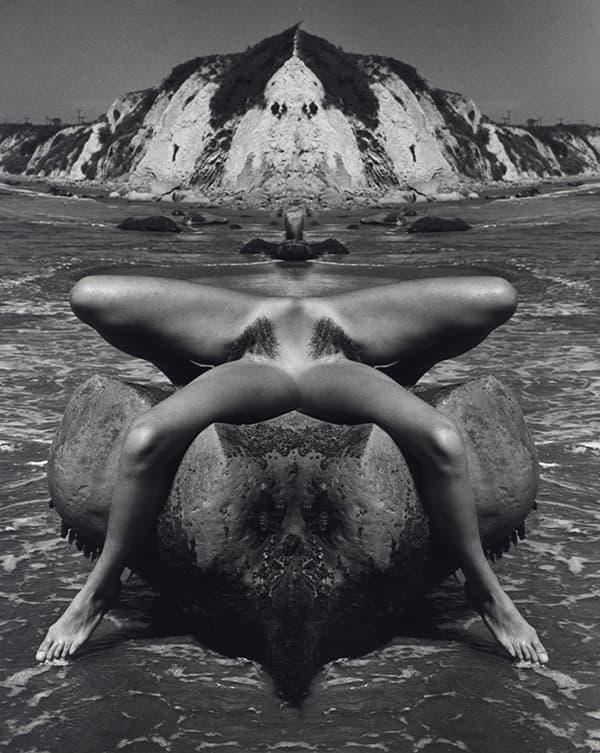
He got into this experimental abstract phase, especially in the California work where there are some photographs of Marilyn where it’s a beach landscape and her head is sort of floating in the ocean, or they’ll be two mirror images of her face hovering over the sea in the clouds.
They are quite interesting and quite unique.

The exhibition Andre de Dienes: Marilyn and California Girls is currently running at the Steven Kasher Gallery, New York until 30 July (2016).







